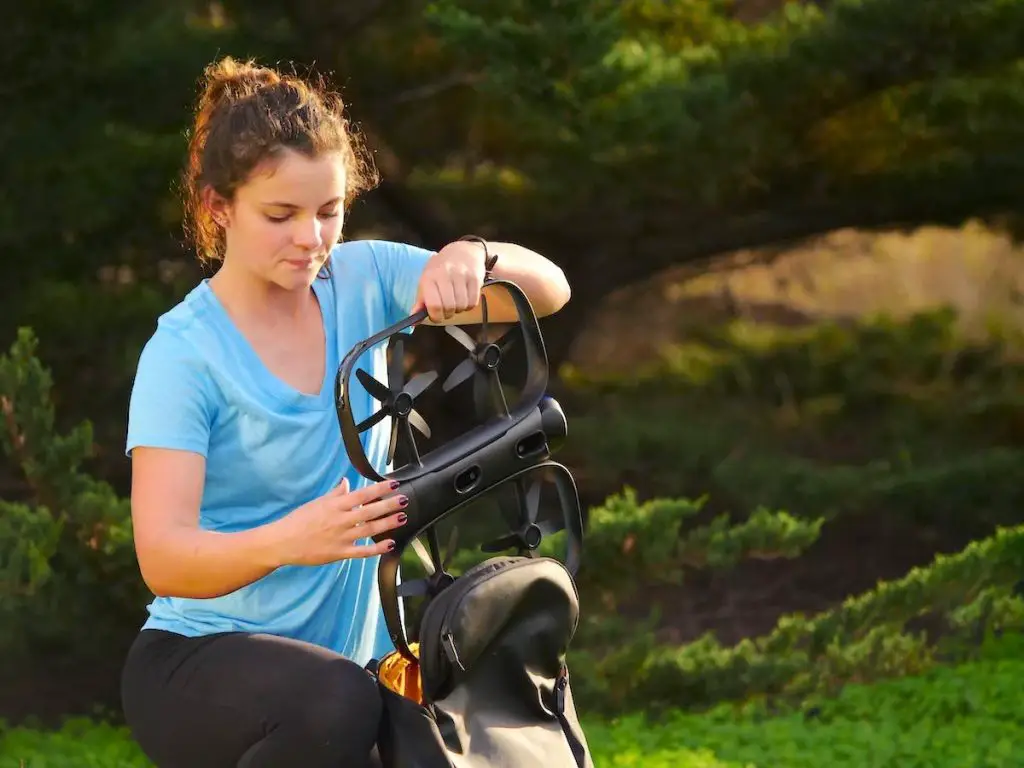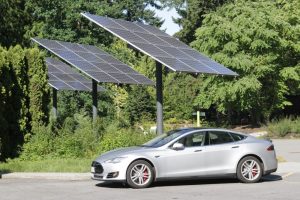Updated on April 21st, 2019
We’ve all seen drones. We read about them every day. Drone violations, drone strikes on enemy targets, the next-door kid’s drone has landed in your backyard again. But pay attention ‘coz there’s new tech in town: the Skydio R1. And it’s not your everyday drone; it’s a fully autonomous flying camera.

Contents
In the beginning…
Unmanned aerial vehicles (UAVs), commonly known as Drones, have been around since 1916! (And you thought they were 21st century, right?). Back then, just like today, the tech was driven primarily by military use to advance and win wars. Cost and secrecy were major roadblocks to the idea of producing private and commercialized drones.
But in 2007, Chris Anderson, the CEO of 3D Robotics, accidentally kick-started the popularity of personal drones when he founded an online community for DIY Drones. That community now has more than 80,000 members sharing ideas, experiences and knowledge.
The community helped geeky dads learn new recreational activities that they can share with their kids. Building a drone from scratch, especially when you’re doing it with family, is really fun. But it can also be quite pricey. It may be worth the price in exchange for the experience, but not all families have the means or the time to commit to the hobby.
Affordable vs geek:
The era of personal, affordable drones started when DJI Innovations demoed their innovation as a new toy during the Hobby Expo China in Beijing in May 2012. Since then, drones have become eye-candy for hobbyists and photo enthusiasts. And as tech and production ramp up, prices continue to fall, making ‘droning’ an affordable past-time.
Enter the Skydio R1…
Two years ago an autonomous drone startup, Skydio, released a video of a sleek and modern looking autonomous drone following a person while they were jogging and biking. It was an absolute breakthrough.
If you have any experience with drones, you’ll know that following a fast moving object, other than in a straight line, is no easy task! Yet here was a drone moving seamlessly and smoothly, following irregular movements without crashing.
Another Skydio clip, filmed by the drone autonomously, follows a pro tennis player who explains how she is using the drone to improve her game. Another shows an athlete running and jumping hurdles. Initially, drone enthusiasts assumed that it may only work flawlessly in an open space but what about walls, trees and other objects that have a habit of breaking drones?
Skydio dispelled all doubts and proved their drone is up for a challenge when they released this video that showcases the Skydio Autonomy Engine. In the video, you can see how the R1 smoothly dodges around trees and even branches while swiftly and smoothly following the biker – even on steep paths.
The Skydio ‘secret sauce’…
Most drones stabilize or follow people with the help of GPS. Unfortunately, GPS doesn’t tell the drone to ‘miss that tree’. And satellite connection will always be a challenge. Can you imagine running in the woods when the GPS suddenly fails? Will your drone survive a 20-foot drop?
The Skydio R1 takes an entirely different approach – a visual one! It ‘sees’ you and obstacles via 12 navigation cameras. Those cameras track the subject while also recognizing and avoiding most obstacles. (The developers admit that transmission wires and similarly fine object are still a problem.)
Skydio R1 works with both Android and iOS. It is powered by the NVIDIA Jetson chip, a powerful AI supercomputer. That same chip is currently being used in self-driving vehicles to assist with navigation.
In addition to the 12 guidance cameras, the R1 is also equipped with a 4K, 30fps, gimbal stabilized camera so that you get amazing clear, shake free footage of your activities.
How does it know what to track?
It’s as easy as! Just deploy the drone then using the mobile app, you just tap the subject. The cameras and drones have now ‘locked onto the target’.
Note that R1 relies on visual data. If your subject is wearing a black baseball cap and a bright orange jacket, tapping on the jacket will improve real-time tracking. It’s simply more visual and therefore, easier to recognize as you run, jog, surf or ski!
Reaching for your wallet yet?
It was 2002 when both Nokia and Sanyo added the first cameras to cell phones. (No silly, Apple copied, which is why there aren’t a million apple instigated camera tech law-suits!) Since then countless billions of images have been snapped as we all document our progress, achievements or even, sadly, what we’re currently eating.
There is nothing currently available that is going to film your activities with the level of sophistication that the Skydio R1 can. I really want one, but do I need one? Am I, or you, prepared to pass across $2,500 for the privilege? My 12 year old basketballer is standing here saying “Can we? Please!”
A ‘set and forget’ flying camera that can predict your next move while navigating a safe trajectory against possible obstacles is an extraordinary tool. The bottom line is that for a professional – be it a sportsperson or videographer, this is a cheap investment.
Me? I’ll wait a couple of years when I’ll be buying the same level of tech for $250.
What about you? Can you see a Skydio R1 in your future? Let us know in the comments section below!
UPDATE APRIL, 2019:
The tech is better (of course) and the price has dropped to $1,499 :)





